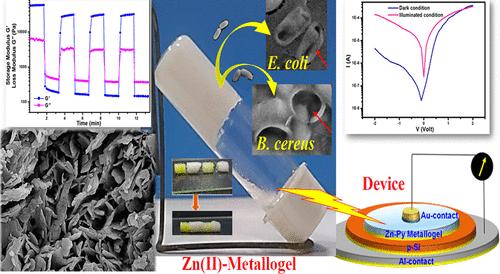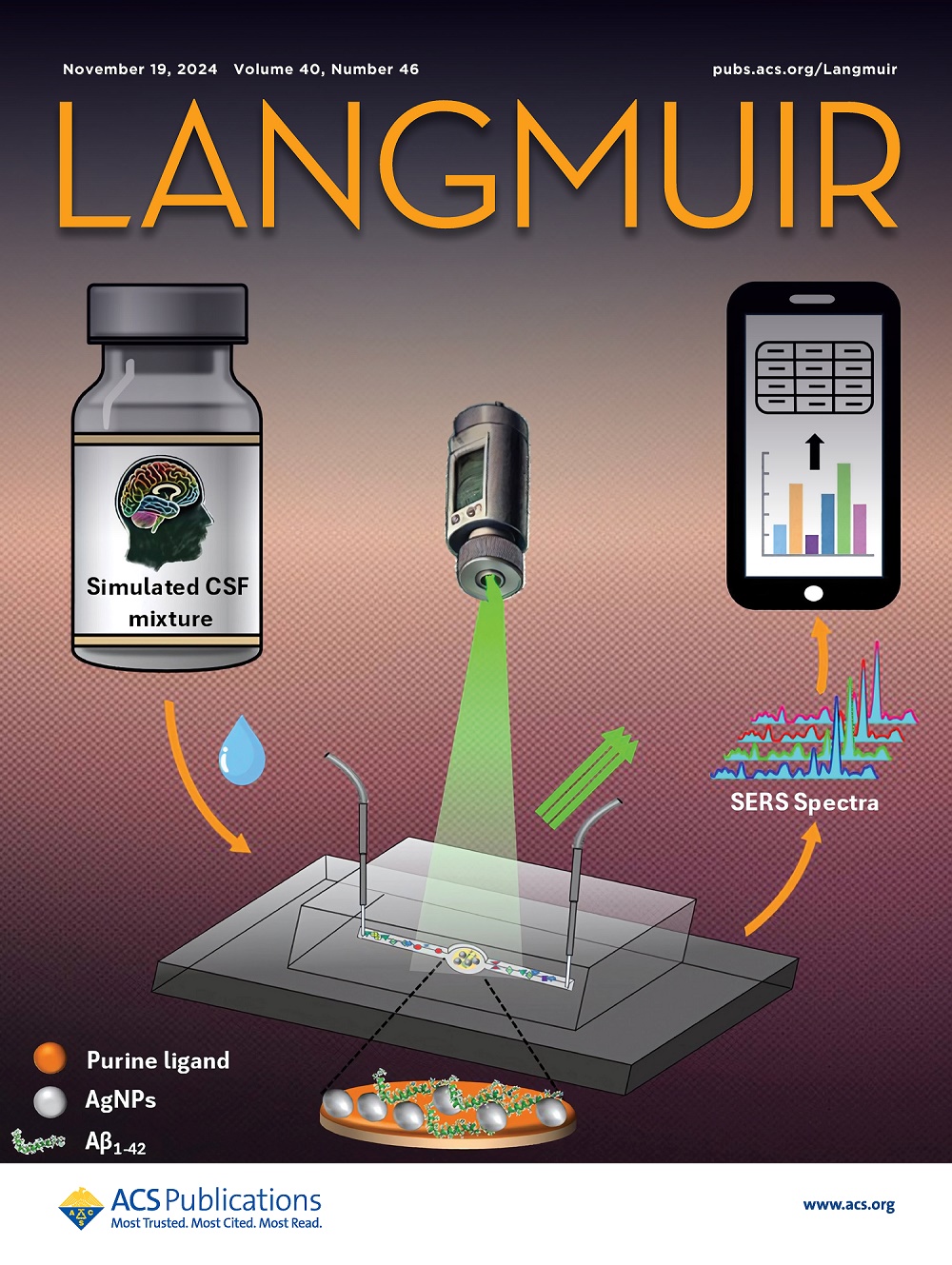Self-Healing Supramolecular Flexible Network of Zn(II): Exploring Chemo-Responsiveness, Antimicrobial Efficiency, and Variable Microelectronic Device Performances
IF 3.7
2区 化学
Q2 CHEMISTRY, MULTIDISCIPLINARY
引用次数: 0
Abstract
The Zn(II)-supramolecular metallogel (i.e., Zn-Py) of 2,6-pyridinedicarboxylic acid was prepared through the addition of a metal source and 2,6-pyridinedicarboxylic acid as a low molecular weight gelator. The Zn-Py metallogel encapsulated N,N′-dimethylformamide as gel-immobilized polar aprotic solvent media. The mechanical features of the synthesized metallogel were investigated. The thixotropic behavior of the Zn-Py metallogel was also analyzed. The microscopic feature of the metallogel was imaged through FESEM and TEM studies. The EDS pattern of the metallogel ratified the role of different gel-building chemical constituents. The stimuli responsiveness of the metallogel was also tested. The metallogel-forming mechanistic protocol was visualized through FTIR and ESI mass spectroscopic analyses. The bioeffectiveness, i.e., antimicrobial potency, of Zn-Py was also studied. The antimicrobial efficiency against both Gram +ve and Gram −ve bacteria including Salmonella typhimurium (MTCC 98), Escherichia coli (MTCC 1667), Bacillus cereus (ATCC 13061), Listeria monocytogenes (MTCC 657), and Staphylococcus aureus (MTCC 96) was critically analyzed. The FESEM images of the live bacteria and damaged bacteria due to the action of the metallogel were experimentally investigated. The Zn-Py metallogel was also used to fabricate the heterojunction and Schottky-type photodetectors to show their excellent light–matter interaction and their potentiality as active material in optoelectronics. The electrical parameters of semiconductor diodes such as the p–n junction and Schottky diode fabricated by the synthesized Zn-Py metallogel were investigated. Outcomes of the experimental investigation demonstrated that the tested metallogel effectively showed p–n junction diode parameters, especially with the ideality factor (η) of 1.3 under a dark environment. This fabricated device efficiently depicted a great ON/OFF ratio of 33.4 at a reverse bias voltage of −2 V. The metal–semiconductor–metal (M-S-M) junction-type Schottky barrier diode was also fabricated using the Zn-Py metallogel where the Au/Zn-Py metallogel/Au-based device fabrication strategy was implemented.

自修复的超分子柔性锌网络(II):探索化学响应性、抗菌效率和可变微电子器件性能
通过添加金属源,以2,6-吡啶二羧酸为低分子量凝胶剂,制备了2,6-吡啶二羧酸Zn(II)-超分子金属凝胶(即Zn- py)。Zn-Py金属凝胶包封N,N ' -二甲基甲酰胺作为凝胶固定极性非质子溶剂介质。对合成的金属凝胶的力学特性进行了研究。分析了锌- py金属凝胶的触变行为。通过FESEM和TEM对其微观形貌进行了表征。金属凝胶的能谱图证实了不同造胶化学成分的作用。同时测试了金属凝胶的刺激反应性。通过FTIR和ESI质谱分析可视化了金属成矿机理。还研究了Zn-Py的生物有效性,即抗菌效力。对革兰氏+ve和革兰氏−ve细菌包括鼠伤寒沙门菌(MTCC 98)、大肠杆菌(MTCC 1667)、蜡样芽孢杆菌(ATCC 13061)、单核增生李斯特菌(MTCC 657)和金黄色葡萄球菌(MTCC 96)的抑菌效果进行了严格分析。实验研究了活性菌和因金属凝胶作用而受损菌的FESEM图像。锌- py金属凝胶还被用于制作异质结和肖特基型光电探测器,以显示其良好的光-物质相互作用和作为光电子活性材料的潜力。研究了合成的Zn-Py金属凝胶制备的p-n结和肖特基二极管等半导体二极管的电学参数。实验结果表明,所制备的金属凝胶能很好地显示p-n结二极管的参数,特别是在黑暗环境下,理想因子(η)为1.3。在−2 V的反向偏置电压下,该器件有效地描述了33.4的ON/OFF比。采用Zn-Py金属凝胶制备了金属-半导体-金属(M-S-M)结型肖特基势垒二极管,实现了Au/Zn-Py金属凝胶/Au基器件制造策略。
本文章由计算机程序翻译,如有差异,请以英文原文为准。
求助全文
约1分钟内获得全文
求助全文
来源期刊

Langmuir
化学-材料科学:综合
CiteScore
6.50
自引率
10.30%
发文量
1464
审稿时长
2.1 months
期刊介绍:
Langmuir is an interdisciplinary journal publishing articles in the following subject categories:
Colloids: surfactants and self-assembly, dispersions, emulsions, foams
Interfaces: adsorption, reactions, films, forces
Biological Interfaces: biocolloids, biomolecular and biomimetic materials
Materials: nano- and mesostructured materials, polymers, gels, liquid crystals
Electrochemistry: interfacial charge transfer, charge transport, electrocatalysis, electrokinetic phenomena, bioelectrochemistry
Devices and Applications: sensors, fluidics, patterning, catalysis, photonic crystals
However, when high-impact, original work is submitted that does not fit within the above categories, decisions to accept or decline such papers will be based on one criteria: What Would Irving Do?
Langmuir ranks #2 in citations out of 136 journals in the category of Physical Chemistry with 113,157 total citations. The journal received an Impact Factor of 4.384*.
This journal is also indexed in the categories of Materials Science (ranked #1) and Multidisciplinary Chemistry (ranked #5).
 求助内容:
求助内容: 应助结果提醒方式:
应助结果提醒方式:


